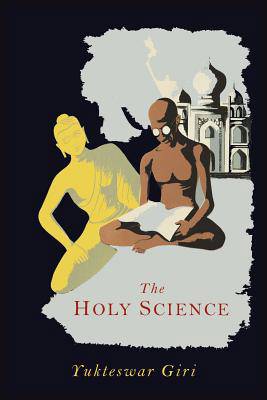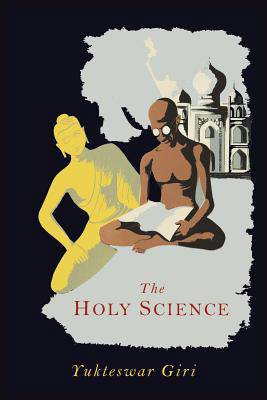
- Afhalen na 1 uur in een winkel met voorraad
- Gratis thuislevering in België vanaf € 30
- Ruim aanbod met 7 miljoen producten
- Afhalen na 1 uur in een winkel met voorraad
- Gratis thuislevering in België vanaf € 30
- Ruim aanbod met 7 miljoen producten
Zoeken
Omschrijving
2013 Reprint of 1949 Edition. Full facsimile of the original edition, not reproduced with Optical Recognition Software. Yukteshwar was an educator, astronomer, a Jyotisha (Vedic astrologer), a yogi, and a believer in the Bhagavad Gita and the Bible. He was a disciple of Lahiri Mahasaya of Varanasi and a member of the Giri branch of the swami order. Yogananda considered Yukteswar as Jnanavatar, or "Incarnation of Wisdom". Yukteswar wrote "The Holy Science" in 1894. In the introduction, he wrote: "The purpose of this book is to show as clearly as possible that there is an essential unity in all religions; that there is no difference in the truths inculcated by the various faiths; that there is but one method by which the world, both external and internal, has evolved; and that there is but one Goal admitted by all scriptures." The work introduced many ideas that were revolutionary for the time - for instance Yukteswar broke from Hindu tradition in stating that the earth is not in the age of Kali Yuga, but has advanced to Dwapara Yuga. His proof was based on a new perspective of the precession of the equinoxes. He also introduced the idea that the sun takes a 'star for its dual', and revolves around it in a period of 24,000 years, which accounts for the precession of the equinox.
Specificaties
Betrokkenen
- Auteur(s):
- Uitgeverij:
Inhoud
- Aantal bladzijden:
- 88
- Taal:
- Engels
Eigenschappen
- Productcode (EAN):
- 9781614274551
- Verschijningsdatum:
- 2/08/2013
- Uitvoering:
- Paperback
- Formaat:
- Trade paperback (VS)
- Afmetingen:
- 152 mm x 229 mm
- Gewicht:
- 140 g

Alleen bij Standaard Boekhandel
+ 17 punten op je klantenkaart van Standaard Boekhandel
Beoordelingen
We publiceren alleen reviews die voldoen aan de voorwaarden voor reviews. Bekijk onze voorwaarden voor reviews.











